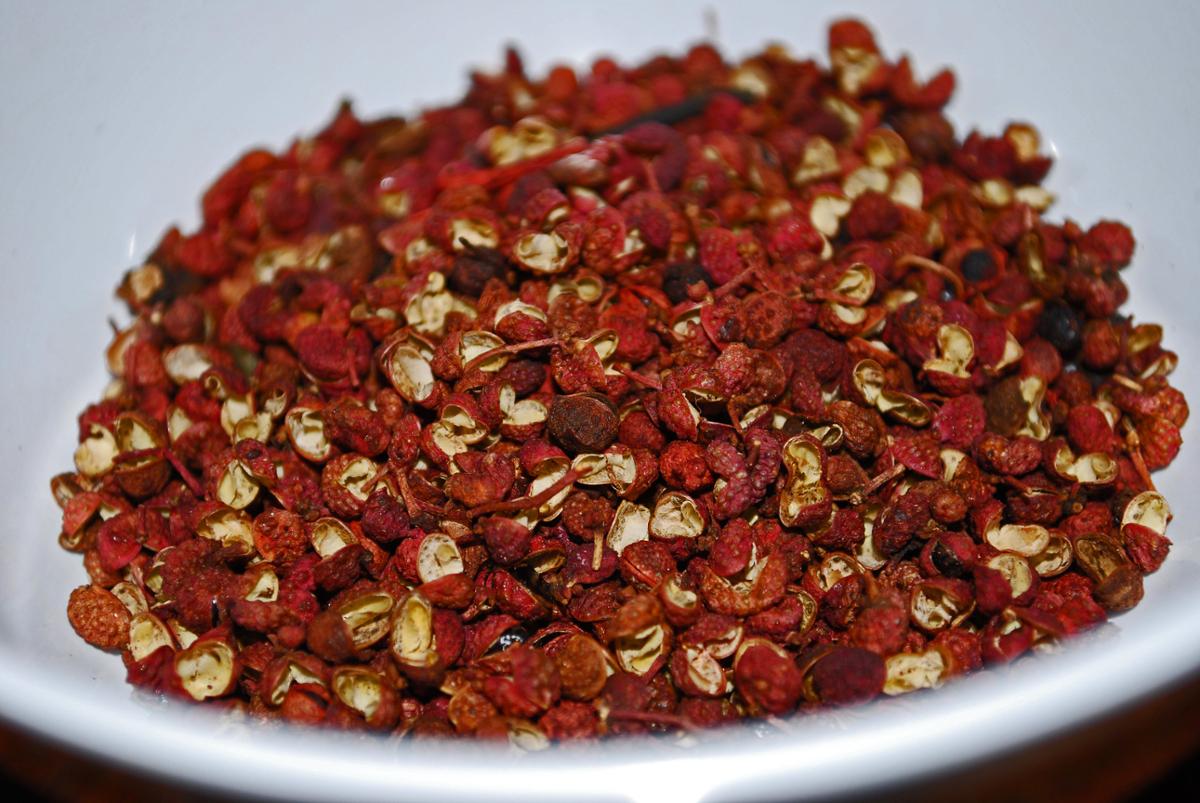If you ever travel to the Sichuan province in China, you may hear the word mala to describe much of the food. The term means “hot and numbing,” referring to both the spicy chiles common in the food and a unique tingling sensation caused by Sichuan peppercorns.
Sichuan peppercorns are not actually peppercorns but a dried berry. Unlike black peppercorns or chiles, Sichuan peppercorns get their unique sensation from a compound called Hydroxy-alpha-sanshool. While capsaicin and piperine cause nerve cells associated with pain to fire in your tongue, this chemical activates tactile receptors in our tongue and lips, inducing a tingling sensation called paresthesia—the same term used to describe the feeling pins and needles.
In 2013 a group of scientists published an experiment where they applied small amounts of Sichuan peppercorns to participants’ lower lip, and then asked the participants to compare the sensation to vibrations on their fingers caused by holding a small, vibrating metal box. The scientist fluctuated the frequency of the box until the participants said it matched the sensation in their lips. The results? The participants said that their lips and fingers experienced the same feeling at around 50 Hertz, meaning that Sichuan peppercorns were causing touch receptors in the mouth to send the same signals to the brain as the mechanical vibration!
Scientists have further suggested that the tingling which the Sichuan peppercorns induce may one day help us understand other forms of paresthesia caused by diabetes, hypothyroidism, or hypoparathyroidism. For now, though, understanding the science behind Sichuan peppercorns is helping chefs around the world transform cooking into a multi-sensory experience.










